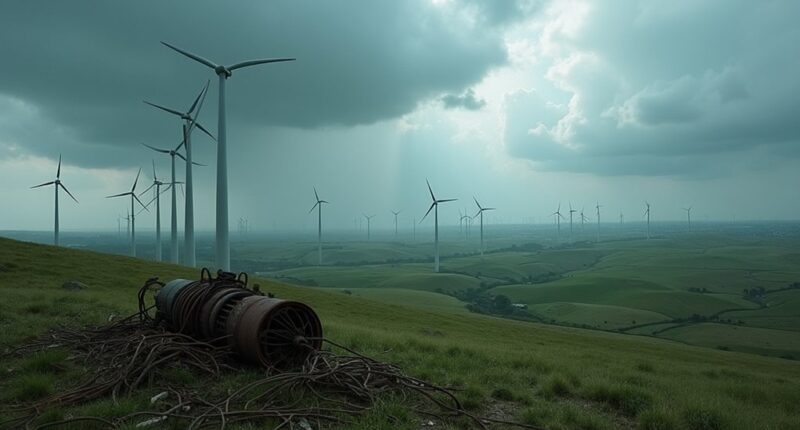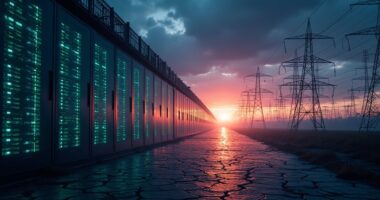The EU’s wind energy dreams face a precarious future. With supply chain hurdles and regulatory delays stalling progress, ambitions to add 30 GW annually are slipping. Permitting can drag on for over six years, while grid infrastructure struggles to keep pace with demand. This situation is like trying to fill a bathtub with a garden hose – frustratingly slow! Without urgent action to bridge these gaps, the promise of clean wind energy could blow away. Stick around to see what solutions are on the horizon!
Challenges Facing EU Wind Energy Expansion
As the European Union strides toward its ambitious wind energy goals, one might liken the journey to a thrilling yet precarious tightrope walk—exciting, but with a growing sense of uncertainty beneath. With a target of adding 30 gigawatts (GW) of wind energy yearly, the EU managed to install only 13 GW in 2024, a stark reminder that the path is fraught with challenges.
Permitting delays have stretched an average of six years, though some countries, like Germany, have begun to set records by streamlining their processes. Unfortunately, many nations still lag behind, caught in a web of inconsistent regulations that slow approvals. Binding deadlines are essential for expediting this process and can significantly enhance project outcomes.
Adding to the woes, over 500 GW of potential wind energy capacity languishes in connection queues, waiting for the grid to catch up. Projects like Borkum Riffgrund 3 highlight the frustrating delays in grid infrastructure, making one wonder if the transmission system operators are stuck in a time warp. The need for baseload power is critical to maintain grid reliability as the EU transitions to more renewable sources.
With insufficient investments in expanding grid capacity, the energy shift plans hang precariously in the balance like an unbalanced load on that tightrope. Advanced energy storage systems would enable greater integration of intermittent renewable sources by providing flexibility and reliability to the electrical grid.
The electrification of the EU’s energy consumption is another hurdle; electricity currently makes up only 23% of total consumption, with a lofty goal of 61% by 2050. The proposed Electrification Action Plan aims to tackle this, but the slow adoption of electrified solutions in industrial and residential sectors suggests that more robust policies and investments are necessary to spur change.
The EU’s ambitious electrification goals face hurdles, requiring stronger policies and investments to accelerate adoption.
Moreover, the wind sector is grappling with increased costs and supply chain limitations that threaten project viability. Higher input costs and delays in turbine manufacturing put a damper on potential expansions.
While 2024 saw a record of 28 GW awarded in auctions, the lingering uncertainties could turn vibrant wind energy dreams into something of a cautionary tale. Unless the EU bridges these gaps swiftly, the promise of clean wind energy may remain just that—a promise.









